12 weird game soundtracks that had no right to work (but did anyway)
An expert guide to the weirder side of game music

Introduction
Some game soundtracks are simply amazing from the first note. They gel seamlessly with the ambience, action and mood of a game (or just sound so good in their own right) that it’s impossible to imagine any other musical accompaniment.
Others, though, are a bit weird.
But this doesn’t have to be a bad thing. In fact in many cases an incongruous, unexpected soundtrack turns out to be a very good thing, adding new texture and context to familiar genres we’ve played a thousand times before.
And thus, aided by our colleages on GamesRadar, we proudly delve into the weirder side of game soundtracks, looking at those mainstream hits and cult classics which looked normal but sounded more than a bit leftfield. Where there should be metal, there is synth. Where should sit noodling, sits polka.
First stop? The blood-splattered Bayonetta and its candy-coated tunes…
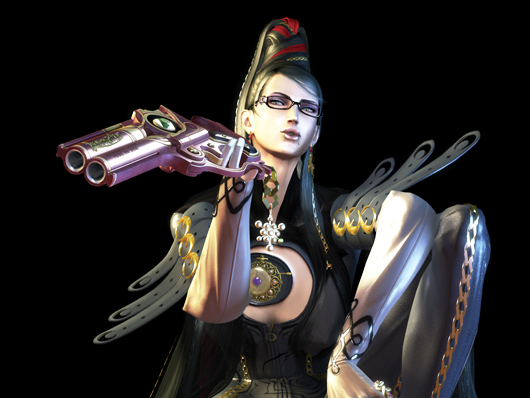
Bayonetta (Xbox 360, PS3)
The soundtrack
A light, jazzy, even J-pop-tinged collection of mellow melodies.
It was weird because…
Bayonetta is an (extremely) combat-heavy, adult, and deeply hardcore action game from the director of demon-busting slay-em-up Devil May Cry. It’s about a renegade, S&M-fashioned witch who kills angels.
The standard approach to these things is dark, gothic orchestration and pulse-pounding industrial beats - indeed, see Devil May Cry and all its sequels.
And so we expected Nine Inch Nails.
Instead we got, well, j-muzak.
But it worked because…
Bayonetta - the game and the character - is ironic, feminine and always, always knowing. Despite the ever-spiralling body count, the game constantly plays with all of its schlock-horror archetypes with hilariously camp and cheeky flair.
To marry this level of sophistication to a stereotypical horrorcore soundtrack would be unthinkable - and thus the audio handbrake turn Bayonetta duly received.
Example: mercilessly outnumbered by a bloodthirsty army, what other game would choose to calm things down with a 'it's cocktail time!' cover of Fly Me To The Moon?
Sweetly sung by Nouvelle Vague collaborator Helena Noguerra, this song has a cult online following. As the comments say on the YouTube clip, "I get such a rush from fighting to this song!"
How things have changed…
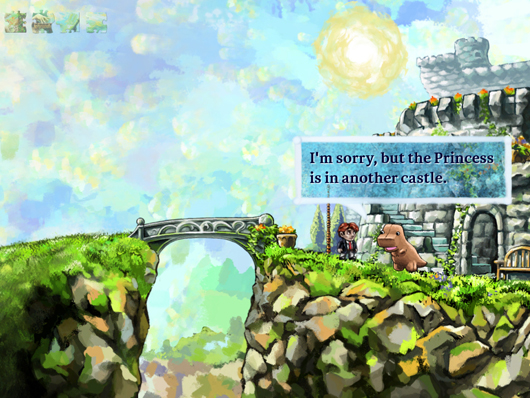
Braid (Multi)
The soundtrack
An eclectic, abstract and deeply emotive selection of modern Celtic music and medieval instrumentation.
It was weird because…
You see a colourful 2D platform game and you immediately think of Mario. And when you think of Mario, you immediately think of happy, throwaway, plinky-plonky tunes.
Not in Braid Land you don't. Eschewing the typical, Braid’s soundtrack is sometimes ethereal, sometimes suffocatingly oppressive and always profoundly affecting.
But it worked because…
Braid is an ‘art game’ that somehow sneaked into the mainstream. If you choose to scratch the surface, you’ll find that the game blends platforms and puzzles with a layered, mature, metaphorical story.
A Mario Lite soundtrack would have been wildly inappropriate and thankfully, Braid's deep, varied soundtrack - licensed from Californian indie label Magnatune - complements the game's emotional density right from the start.
Check this interview for more on the strategy behind the soundtrack.
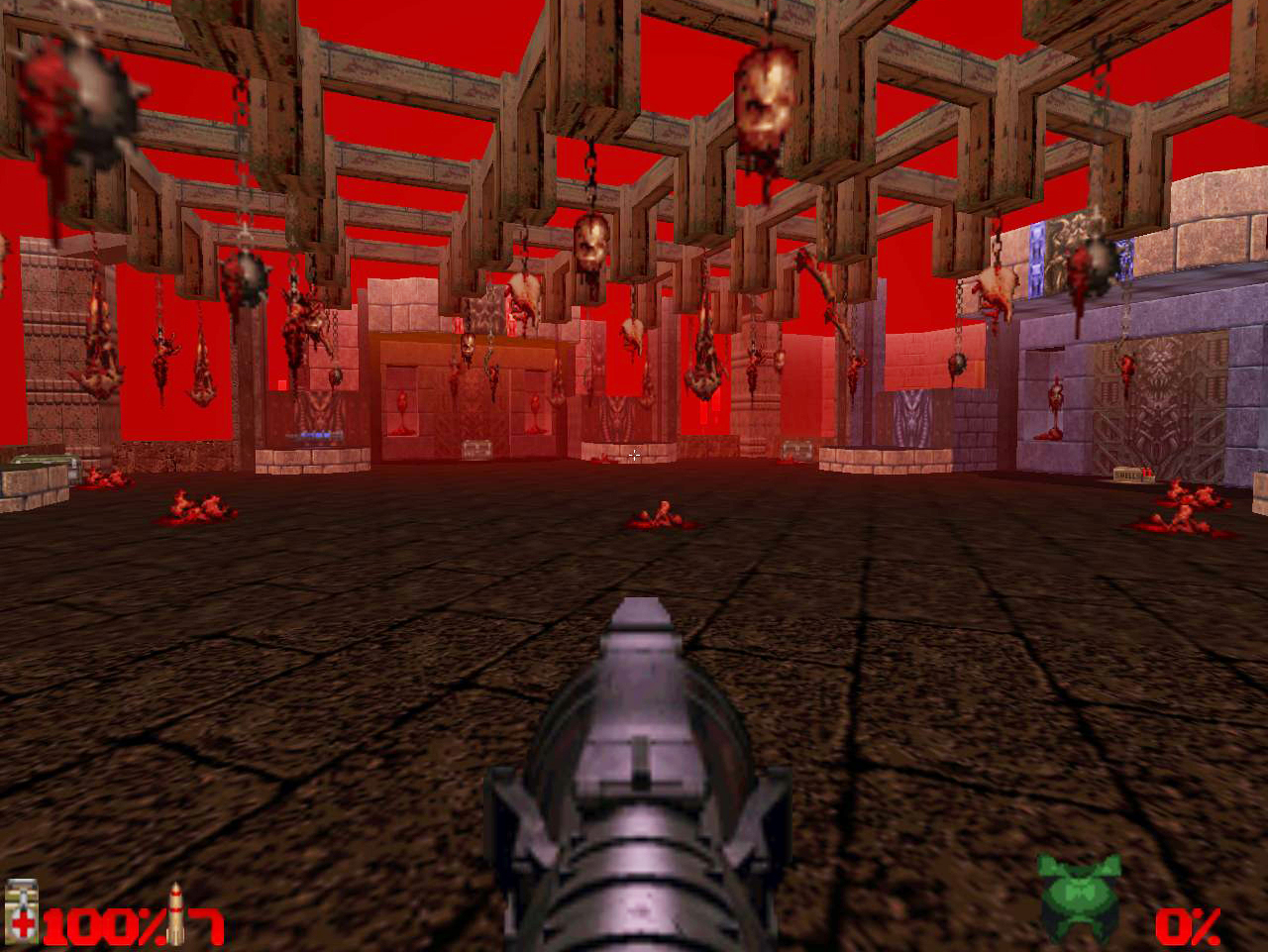
Doom 64 (Nintendo 64)
The soundtrack
A cold, punishing, synthy hellscape.
It was weird because…
Ever since the first iteration of Doom appeared in 1993, id Software's first-person shooter had been synonymous with one sound - raucous, stomping, MIDI metal.
Doom's gung-ho music was always a guilty pleasure (particularly given the tunes’ suspicious similarities to certain commercial metal tracks of the day), but its bouncing, upbeat anarchy was the quintessential soundtrack for chainsawing demons' heads off. Changing this was surely unthinkable…
But it worked because…
But the unthinkable happened. Of course, swapping metal for ambient could've been a disaster but Doom 64's new Tangerine-Dream-go-to-boot-camp synthscapes offered fans a whole new level of aural sophistication.
The power of the Nintendo 64 had taken the franchise to a whole new visual level. That improved realism and visual design would have shone a harsh light on the throwaway Pantera knock-offs of the past.
Change was the only option and, reimagined for 1997, Doom 64’s icy, abstract horror realised the genuine fear and isolation of the series’ concept like never before…
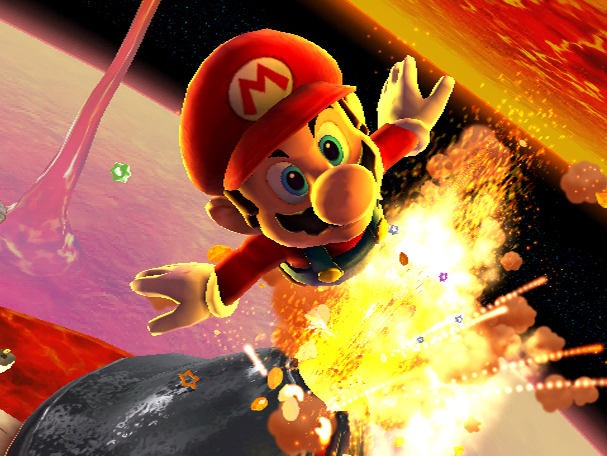
Super Mario Galaxy (Wii)
The soundtrack
The sound of your childhood, now grown up.
It was weird because…
Koji Kondo’s traditional Mario tunes are the stuff of legend - gleeful, bleepy, blue-sky sounds that put a giddy 8-bit smile on the most curmudgeonly face.
With the Wii’s Super Mario Galaxy though, all of that retro appeal was ditched. Collaborating with Mahito Yokoto (although it was Kondo's composition that won out rather than Yokoto's rejected ideas for Latin percussion and sci-fi sounds), Kondo's sweeping orchestral arrangements were now the soundtrack for Mario's adventures.
But it worked because…
The previous Super Mario Sunshine lacked the old games’ magic, and for hardcore fans, so did the Wii itself. Galaxy’s downright majestic, celebratory score repackaged that magic on a never-before heard scale, and made the plumber’s triumphant return a genuinely epic experience rather than relying on the faded memories of the past.
Check this behind-the-scenes footage of the Super Mario Galaxy Music Orchestra and you'll see what we mean - chiptune it most certainly ain't.
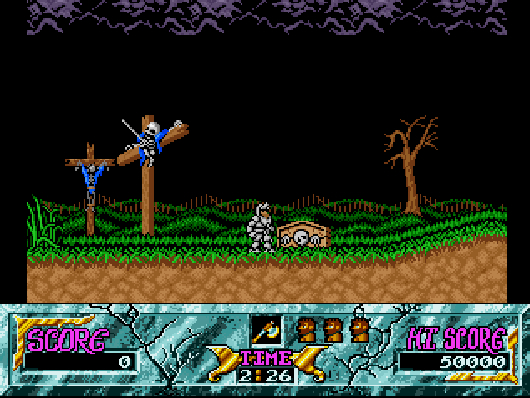
Ghouls 'n Ghosts (Amiga/C64/Atari ST)
The soundtrack
Some of the most varied, atmospheric chiptune you’ll ever hear.
It was weird because…
Capcom’s Ghouls ‘n Ghosts soundtrack for the arcade original was a barnstorming, if fairly traditional 16-bit selection by Japanese game soundtrack composer Tamayo Kawamoto.
However when game music legend Tim Follin got hold of the Amiga, Atari ST and C64 adaptations, he threw it all away and wrote something much more experimental.
But it worked because…
Follin’s mix of folky, medieval sounds (hear the Amiga intro here), atmospheric soundscapes (hear the C64 version here) and electronic abstraction (check out the Atari ST intro) transformed Ghosts ‘n Goblins from a knockabout coin-op romp into an eerie and genuinely unsettling experience.
Not bad for a cartoon-horror platformer where you run around in your pants for half the game…
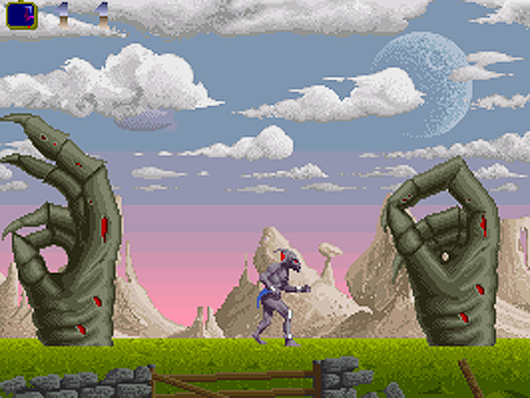
Shadow Of The Beast (Commodore Amiga)
The soundtrack
New age chiptune and a whole new standard.
It was weird because…
No-one had heard anything like it in videogames before. Charged with composing the music for Gremlin’s technically groundbreaking fantasy side-scroller, David Whittaker combined new age, proggy compositions with some of the highest quality sounds the Amiga could produce.
But it worked because…
The overall effect was mesmerising. Where traditional 16-bit music was repetitive and quick to loop, Whittaker’s lengthy atmospheric compositions swirled and grew to amazing effect, supporting the game’s dark, rural fantasy imagery and Roger Dean box art stunningly well.
Whittaker went on to score countless games, including cult C64 hits Xenon and Speedball. He branched out into games design and his mini-game anthology Lazy Jones was released for the C64 in 1984 by Terminal Software.
Not heard of Lazy Jones? Yes, you have. The riff-based song Stardust (composed by Whittaker) was the basis for the dance smash Kernkraft 400 by Zombie Nation - compare the audio clips here and then head to YouTube for countless mash-ups.
Initially unlicensed, Zombie Nation and Whittaker settled out of court with the game composer receiving "an undisclosed amount".
We told you there was money in game soundtracks…
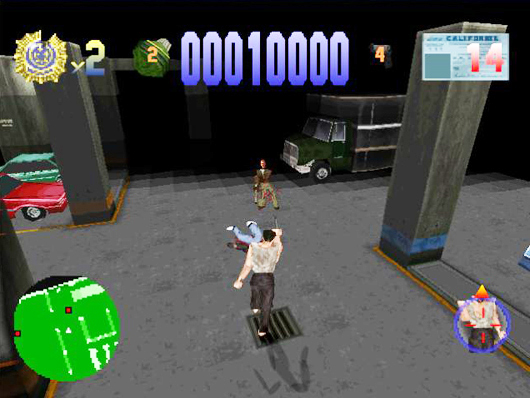
Die Hard Trilogy (Multi)
The soundtrack
Smooth synths to massacre terrorists by.
It was weird because…
A Die Hard game should surely be all cinematic bombast and rousing orchestration. Instead, the soundtrack to Probe’s Die Hard Trilogy is all soaring synth, moody electronica and rolling dance beats - check here for proof.
But it worked because…
With its layered, synth-heavy sound and MIDI guitars, Die Hard Trilogy sounds nothing like an '80s action movie (or indeed Die Hard the movie), but it does sound a helluva lot like the '80s. Or at least a beefed-up '90s tribute to it. Which, is exactly what the game itself was.
The soundtrack still has a cult following online with countless remixes surfacing on chiptune sites and YouTube. Start your investigations here, officer.
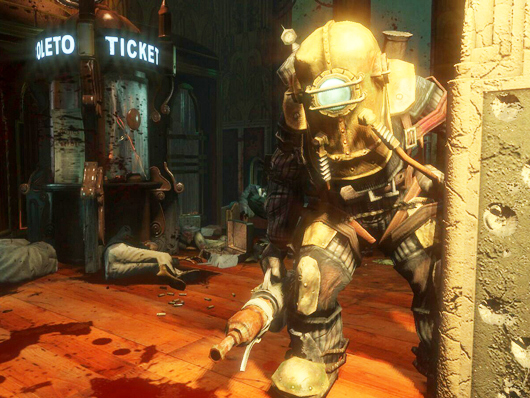
BioShock (Multi)
The soundtrack
70-year old music in a cutting-edge, modern shooter
It was weird because…
There’s no genre more visceral and action-driven than the first-person shooter. As such, orchestral bombast and/or pulsing electronica are usually the order of the day.
Instead, BioShock used an original score by Gary Schyman (download it here for free) but more pointedly, it also featured a selection of original recordings from the '30s, '40s and '50s, from the likes of Perry Como, Bing Crosby and Noel Coward. Check the full list here, courtesy of Xbox Live evangelist Major Nelson.
But it worked because…
BioShock was the thought-provoking, atmospheric and tragic story of doomed ‘50s undersea utopia Rapture. Exploring the decaying art deco remains of the nightmarishly ravaged city to period-appropriate popular music made its fall all the more real and affecting. In that context, nothing was eerier than the ghostly strains of The Inkspots’ If I Didn’t Care.
For those exploring further, a BioShock EP was released with the limited edition version of BioShock. It contained remixes by Moby and Oscar The Punk of Beyond The Sea (Bobby Darin), God Bless The Child (Billie Holiday) and Wild Little Sisters (Moby original), all as featured in the original game.
Our advice? Steer clear.
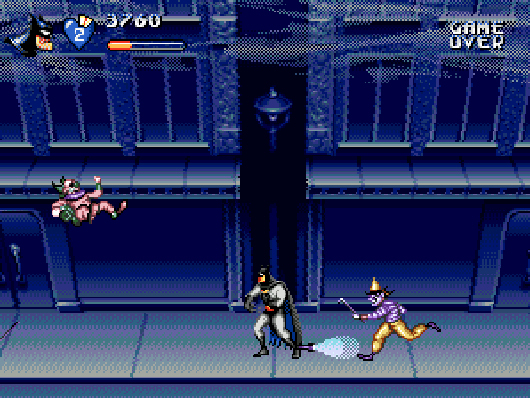
The Adventures Of Batman And Robin (Mega Drive)
The soundtrack
Gotham gone Cyber-goth.
It was weird because…
This 1994 game was originally conceived as a license of the then-popular Batman: The Animated Series (AKA The Adventures Of Batman And Robin). The SNES version was faithful to its animated parent, translating the show’s gothic soundtrack.
The makers of the Mega Drive version though, decided that thumping EBM and hard techno were the way to go.
But it worked because…
The music was just so damn well written. Blistering, abrasive, but complex and atmospheric, the driving beats complimented the faster-paced, demonically-hard Mega Drive version beautifully. In fact you could drop them on any neon-and-eyeliner-tinged dancefloor today and easily get away with it.
Composed by Danish ex-demoscene composer Jesper Kyd (who has since gone on to score the likes of Hitman and Assassin's Creed), the Mega Drive soundtrack has a large online following - check out this shrine for details, original MP3s and remixes.
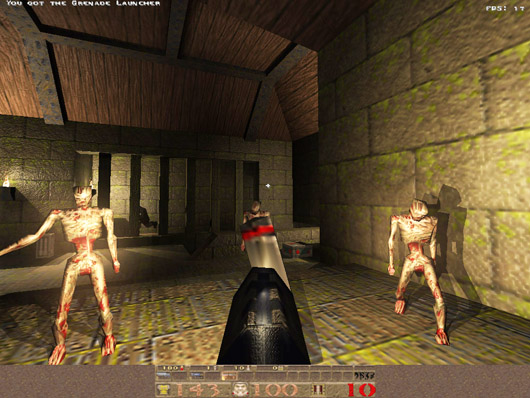
Quake (PC)
The soundtrack
The sound of a game disc spinning on a Nine Inch Nail.
It was weird because…
Just before the ground-breaking Quake, id Software had made Doom 2. Yup, bouncy MIDI rock (listen here) was still the standard, and could be heard in every first-person shooter around.
For Quake, id decided to mix things up and hired one Trent Reznor - and thus a whole new world of blistering industrial, screeching feedback and noise was mercilessly unleashed.
But it worked because…
Reznor’s explosive beats and creepy metallic ambience should have been too much for gamers in 1996. But then so should Quake. Genuinely 3D, scary-fast, and utterly brutal, it was the kick-in-the-teeth evolution of shooters, and as such, its soundtrack felt like a battle cry.
Listen here and compare that to Doom 2.
Exactly.
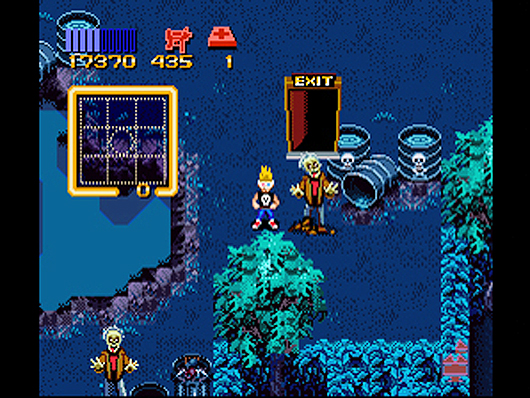
Zombies Ate My Neighbors (SNES/Mega Drive)
What it was
An incoherent mash-up of kitsch noises.
It was weird because…
Much like the game's breathless take on b-movie releases from the '50s to the '80s, the music to Lucasarts’ 16-bit monster shooter is an unapologetic mess.
Composed by cult game composer George 'The Fat Man' Sanger, it's an incongruous musical patchwork capable of radically changing style every few seconds, and sounding frequently like a '50s drive-in movie shown in a circus tent. In Hell.
But it worked because…
Without the soundtrack’s schlocky, off-kilter, fairground creepiness, Zombies Ate My Neighbors would have been just another cartoon horror game. The music lifted it to a different level, creating an authentic exploitation movie tribute cleverer than the sum of its parts without being po-faced.
Click here and you'll see exactly what we mean…
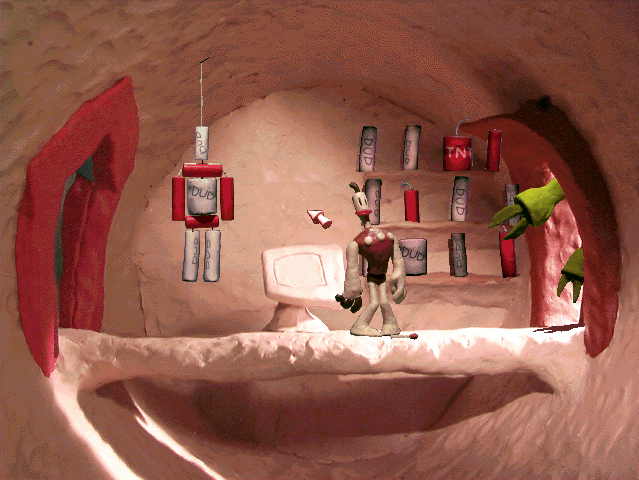
The Neverhood (PC)
The soundtrack
Jazz, cacophony, polka… In a puzzle game.
It was weird because…
The point-and-click adventure is usually the most sedate and cerebral of genres, requiring a strong narrative, and much patience and lateral thought from the player. So, ambient background noodling, right?
Wrong. The Neverhood’s guano-mental music is raucous, noisy, and very, very silly. It should have broken our minds.
But it worked because…
The Neverhood was a lunatic game by Doug TenNapel, the twisted mind behind Earthworm Jim. It was a surreal, claymation adventure which used nutso animation and accessible visual puzzles to keep the madness flowing at pace. It was the point-and-click Ren & Stimpy, so its aural insanity was weirdly fitting.
Composed by Terry Scott Taylor, the ensuing Imaginarium: Songs from The Neverhood was a critical hit. Inevitably, like the game, it didn't exactly set the mainstream alight. For the initiated though, here was game music elevated to a new level - interested parties should make with the PayPal right here.
Liked this? Now read: A-Z of chiptune
Connect with MusicRadar: via Twitter, Facebook and YouTube
Get MusicRadar straight to your inbox: Sign up for the free weekly newsletter